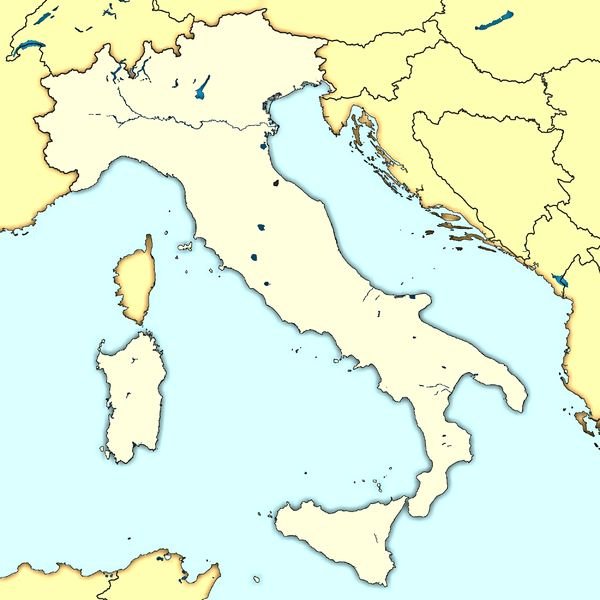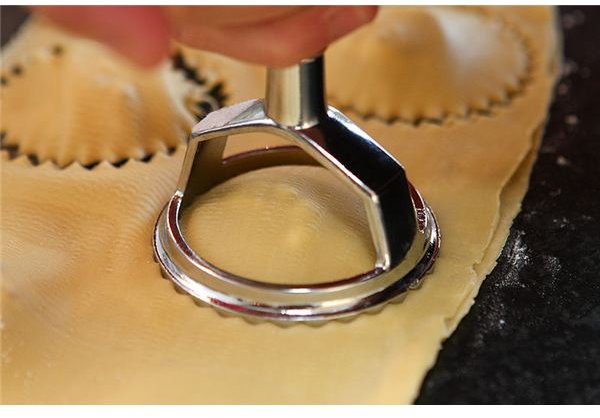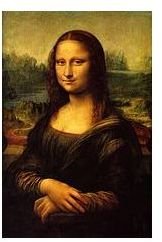Preschool Italy Lesson Plan & Activities, Includes Assessment & Extension Activity
Lesson Overview
In the following activities and lesson ideas, we will take a look at the basic facts regarding Italy, learn a few Italian words, and
address the issue of Italy’s rich food culture. In extension activities, we will also address Italian art and architecture.
Objectives
Students will be able to:
- Identify Italy on a map, and recognize the Italian flag.
- Speak a few Italian words, as well as understanding their meaning.
- Have a greater understanding of Italian food.
- Recognize the Mona Lisa, and the Leaning Tower of Pisa.
Where is Italy? An Introductory Activity
Materials
-
Map of Italy

-
Map of the World - 1 large to use as display, and sufficient copies for students
-
Picture of Italian flag, and sufficient blank flags for students to color - you can find preschool clip art flags of the world, in many places.
-
Plenty of red and green coloring pens
It’s hard to get across to children of this age, just how big the world is, and how small their little area of it actually is, so begin by holding up a map of Italy for them to see - point out that it’s easy to recognize as it looks like a boot. Then show them a map of the world and ask if they can see Italy on it - chances are they won’t, so point it out to them if not. It can also help to point out where you are on a map, so they can see how far away it is, in terms of the big wide world.
Next hold up the Italian flag - explain to them that each country in the world has a flag, and that they are all different. Point out how it is split into 3 sections, one green, one white, and one red. Next, hand out a blank flag, and a blank map of the world to each child. Ask them to color in the flag according to the one you’ve shown them (put it up on display for reference), and after they’ve done that they can continue to the map of the world. Ask them to circle Italy, and color it in, if they have time.
Speaking Italian
A lesson on Italy wouldn’t be complete without the children learning a word or two of basic Italian. It can often help to introduce the book. “Strega Nona”, at this stage (which means Grandma Witch), as it includes a selection of simple Italian words, as well as being a great story to hold the preschooler’s attention.
Teach the preschool children some basic Italian words that they can impress their parents with - vocal repetition is the key with this exercise as learning how to say and read English words is difficult enough at this stage, without adding another language into the mix. Good words to start with are:
- Hello & Goodbye - Ciao (pronounced “chow”)
- Hi - saluto
- Mom - Mamma
- Dad - Papa
- Teacher - Maestro
- My name is - mi chiamo (pronounced “mee kee-AH-moh”)
Try greeting each other with ciao or saluto, in the morning, and using the terms mamma and papa, when talking about their parents to reinforce the meaning. If you want to continue this theme further, then why not use a lesson plan using Strega Nona, for another time.
Italian Food
Any Italy lesson has to include the mention of Italian food; this being a huge part of the Italian culture. If there’s one thing preschooler’s understand, it’s food, and they are likely to be familiar with many Italian foods already. Pizza and pasta,

are easily recognizable, and foods which most preschoolers are happy to eat. It is likely that they are just used to seeing it, in it’s finished state on their plate, so introducing some basic mixing and measuring, will help give them an idea of what goes into making these famous Italian staples. The lesson plan here, involves making fresh pasta. It is ideal if the children can work in pairs or small groups when tackling this exercise.
Materials
- Rolling pins
- Mixing bowls
- Measuring scales
- Forks
- 3 1/2 oz (100g) fine flour per student
- 1 large free range egg per student
- Put the flour into a bowl, and make a well in the center.
- Add the egg, and beat into the flour using a fork. When it gets too thick, preschoolers can mix the rest with their clean hands.
- Students should then knead the dough, to make it “springy”.
- Roll out the dough, thinly using the rolling pins.
- You can now either cut it into strips, cook, and serve with a pre-made tomato sauce as a snack, or use pastry cutters to make individual ravioli. Cooking should take no more than 3 minutes in boiling water.
As an alternative to making pasta, why not get your preschool children to make a pizza dough (or use ready-made bases), and choose which (pre-sliced) ingredients to put on their pizza - they could even make funny face pizzas, or rectangular Italian flag pizzas, using green peppers, mozzarella cheese, and tomatoes.
Assessment
With the introductory activity, you will clearly be able to assess the children’s ability to recognize images, observational skills, and fine motor skills when coloring in the flag and map. Have they chosen the right colors in the right places? Have they colored it in completely, or just scribbled the right colors? Have they kept within the lines?
When speaking Italian, do the children say “ciao” back to you, or have they forgotten? If they just giggle, then chances are they know the word but feel a little shy at using the new language. Have parents commented to you about the children using Italian words at home?
The interactive cooking activity, is the ideal opportunity to see how the children interact with each other - do some take charge, while others quietly go about their task? When using the measuring scales, do they understand some basic numbers?
Extension Activities for Learning About Italy
Of course any preschool lesson plan on Italy

wouldn’t be considered complete, without delving into the world of Italian Art and architecture.
Show the children a picture of the leaning tower of Pisa, and explain how long it has been ’leaning’. You could then make some 3D replicas of the tower, using either paper maché, or simply using a bottle, and cutting a section of it at an angle. The children are then free to paint and decorate it.
The Mona Lisa is one of the most famous paintings in the world. When showing them a picture of it, explain to the children that it was painted by an Italian artist many years ago, and is worth lots of money today. They can then draw or paint their own Mona Lisa pictures.
There are many more activities that have a preschool Italian theme, just waiting to be explored, but the preschool lesson plan on Italy above, will give a good basic knowledge, of all the aspects of Italy a preschooler is likely to be interested in, as well as giving you the chance to observe their basic skills, and how they interact with one another.
Resources & Image Credits
https://www.jamieoliver.com/recipes/pasta-recipes/a-basic-recipe-for-fresh-egg-pasta
https://www.bbc.co.uk/food/pasta
Images
Map of Italy - https://commons.wikimedia.org/wiki/File:Italy_map_modern.png
Italian flag - https://commons.wikimedia.org/wiki/File:Italy_flag.gif
Making Pasta - https://commons.wikimedia.org/wiki/File:Making_my_own_pasta-_ravioli.jpg
Mona Lisa - https://commons.wikimedia.org/wiki/Mona_Lisa
